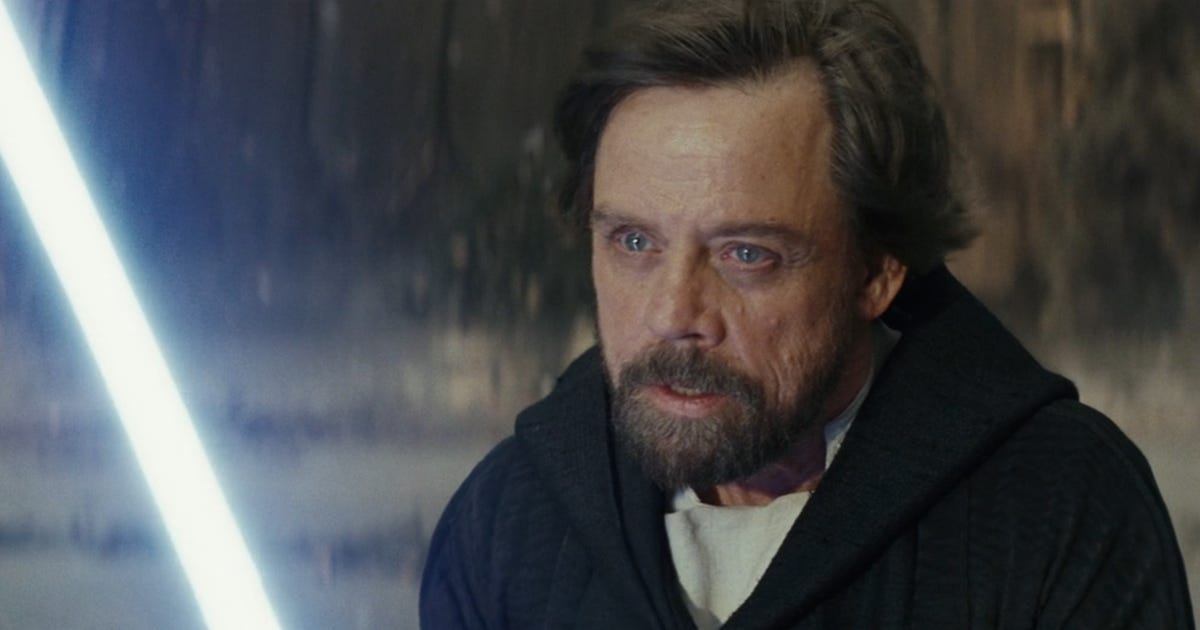
Star Wars: Shadow of the Sith shed light on one of the most fascinating points in the timeline when it came out last month, bringing us on an epic journey with Jedi master Luke Skywalker, war hero Lando Calrissian and Rey’s mysterious, terrified parents in a novel set in the period between Return of the Jedi and The Force Awakens.
The novel also dives in to some surprising ancient Sith mysteries and sets up new potential threats to the galaxy. If you were intrigued by the mysteries hinted at in The Rise of Skywalker, this is an essential read. It’ll answer many of your questions and open up a bunch of exciting storytelling possibilities for the future.
It’s written by passionate New Zealand-born author Adam Christopher, whose previous work includes superhero-noir adventure Empire State, the sci-fi horror Spider War series and Stranger Things tie-in novel Darkness on the Edge of Town.
I got to take a deep dive into Shadow of the Sith with the UK-based Christopher during a lengthy Zoom interview, where we discussed naming Rey’s parents, defining Luke as a Jedi master, exploring a new side of Lando and establishing new Sith threats to the galaxy.
Full SPOILERS for the novel lie ahead, so I’d recommend waiting until you’ve finished the book to proceed. Here’s a transcript of our conversation, lightly edited for clarity.
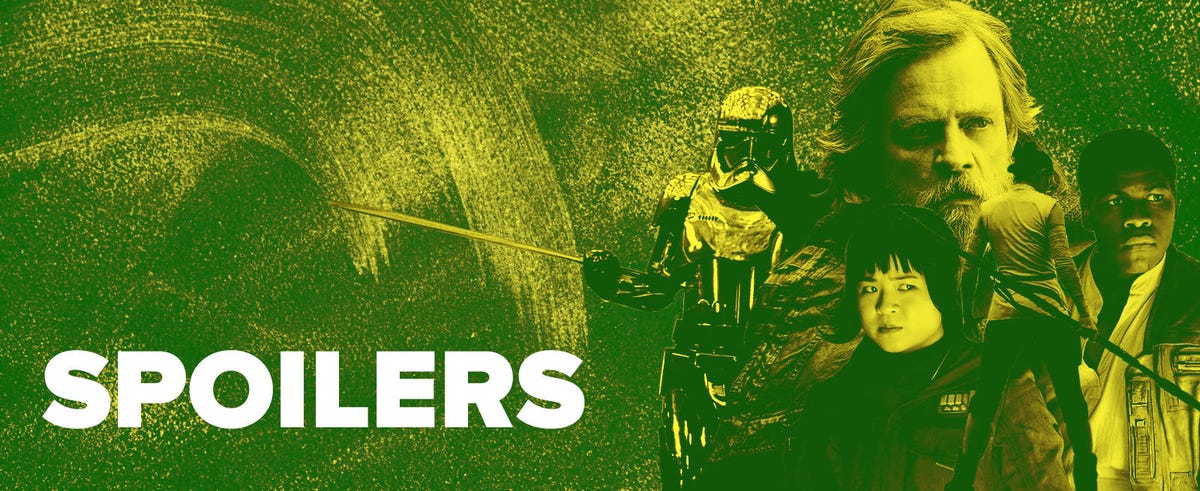
Tell me your Star Wars origin story.
Christopher: I’m a classic child of the ’80s; I’m exactly the right age to have grown up with the movies, the action figures and the toys. It’s largely down to my dad because he was a big science fiction fan; he took me to see Star Wars in 1978.
He worked in advertising and he used to do business trips to Asia and Taiwan, and bring back loads of toys that you couldn’t get in New Zealand. So it was a totally privileged Star Wars childhood.
And I would watch the Original Trilogy on VHS; we used to rent it from the video store, like every weekend for five or six years and I would watch nothing else. I can still recite those movies off by heart — I’m sure a lot of people my age can.
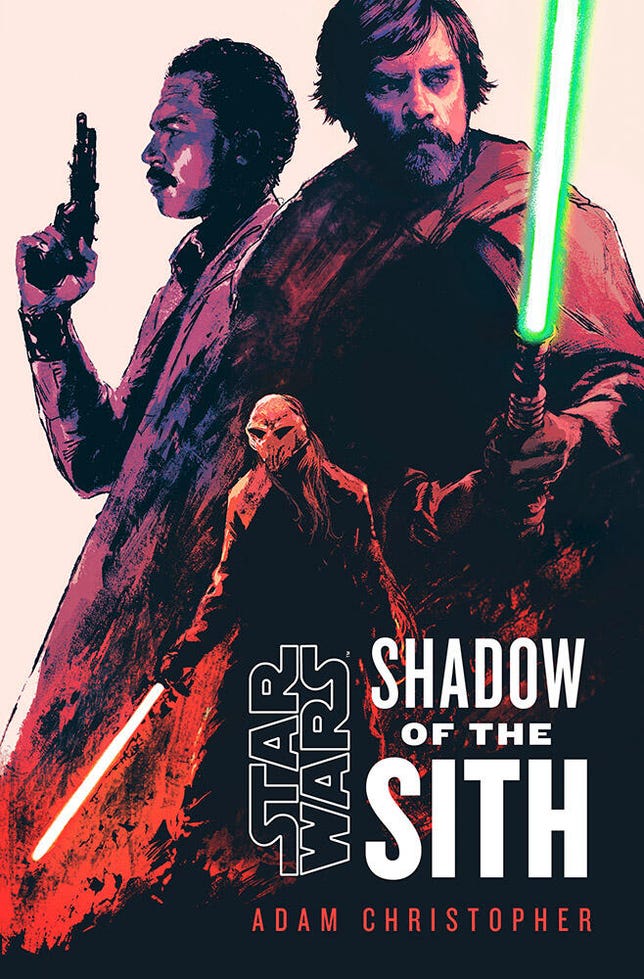
Shadow of the Sith came out on Tuesday.
Penguin Random House
How did you end up writing Shadow of the Sith?
Christopher: I had done two short stories for the From a Certain Point of View anthologies — these were for the 40th anniversaries of Star Wars and The Empire Strikes Back — and I’d done a backup comic in IDW’s Star Wars Adventures. I was going to do a Mandalorian novel a couple of years ago, but that didn’t go ahead.
They invited me to do another book instead in early 2021 and were like, “Well, we’ve got this story about Lando and Luke when they go chasing Ochi of Bestoon, how about you do that story?” And I was like, “Yeah, of course” — I couldn’t believe it. I don’t think I’ve ever replied to an email faster than that.
I remember hearing the line in The Rise of Skywalker when Lando alludes to that adventure, and “Oh, I’d very much like to get more on that.”
Christopher: I saw Rise of Skywalker probably four or five times when it was released. When Lando says that to Rey, my reaction was, “What do you mean Lando and Luke went off on this adventure? What a strange pairing.” Long before I was gonna do the book, I thought what a cool story that would be. Then I get to write it years later, which is kind of weird. As a Star Wars fan, I’m just geeking out because I get to do that story.
I treated it like Episode 6.5 — this story is set between Return of the Jedi and The Force Awakens — this needed to be a cinematic epic adventure. It was a joy to write because I love Star Wars, but it was also a responsibility because I had to link the original trilogy and the sequel trilogy.
Shadow of the Sith reveals that Rey’s parents are called Miramir and Dathan. Where did those names come from?
Christopher: So, this is a deep, secret, magic in-depth look at the writing process: I had a friend at school called Dathan. And I just thought it was a cool name. I think it’s a more common name in the States, but I wanted something that was not super common, but also like an earthy name. Star Wars is that magical thing where there’s a mix of kind of strange alien names and then you’ve got Luke and Ben. And when you dig into the books and the comics, you find even more examples.
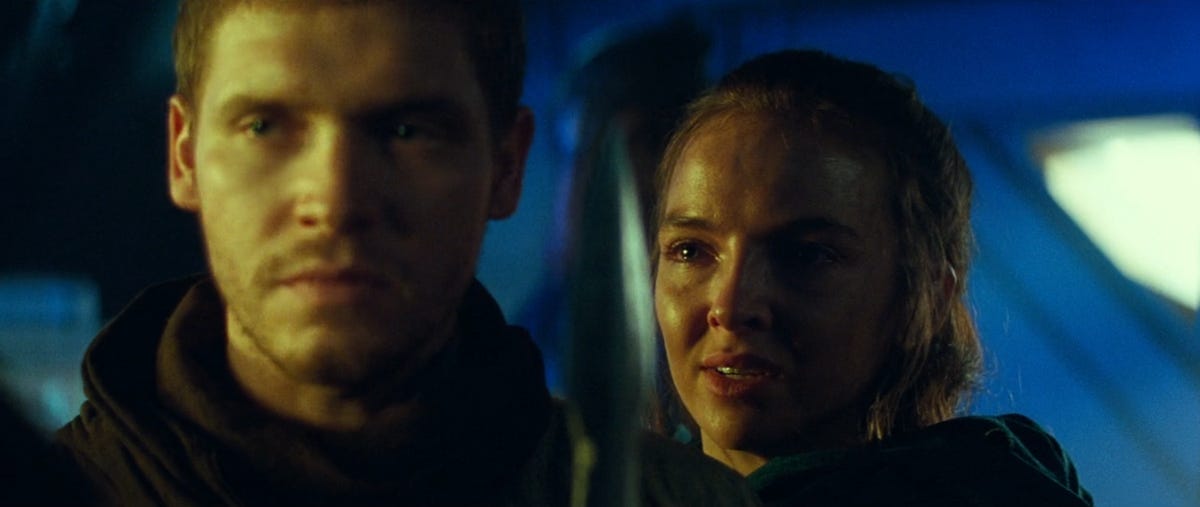
The book reveals that Rey’s parents, previously glimpsed only in flashback in The Rise of Skywalker, are called Dathan and Miramir.
Lucasfilm
With Miramir, I wanted a kind of fantasy name, because in the book we see her home planet — it’s not magical, but it has a twilight forest and is very mysterious. There’s a place in Wellington in New Zealand called Miramar, which is where Weta Studios, who made Lord of the Rings, are based.
I just typed it in, switched some of the letters and I was like “Well hang on — that sounds really cool.” It had a kind of magical quality, it sounds almost Elven. It was also a contrast to Dathan, which is relatively simple. Whereas Miramir sounds a little bit otherworldly.
Right. Even though Dathan is sort of a clone of an evil space wizard, he’s a relatively ordinary guy. But I got the sense that maybe Miramir has Force potential.
Christopher: Well, she’s definitely got talents. And Dathan recognizes that; she’s the one that gets them out of a few scrapes in the book. Her family, which we get hints of in the book, would be quite interesting to explore.
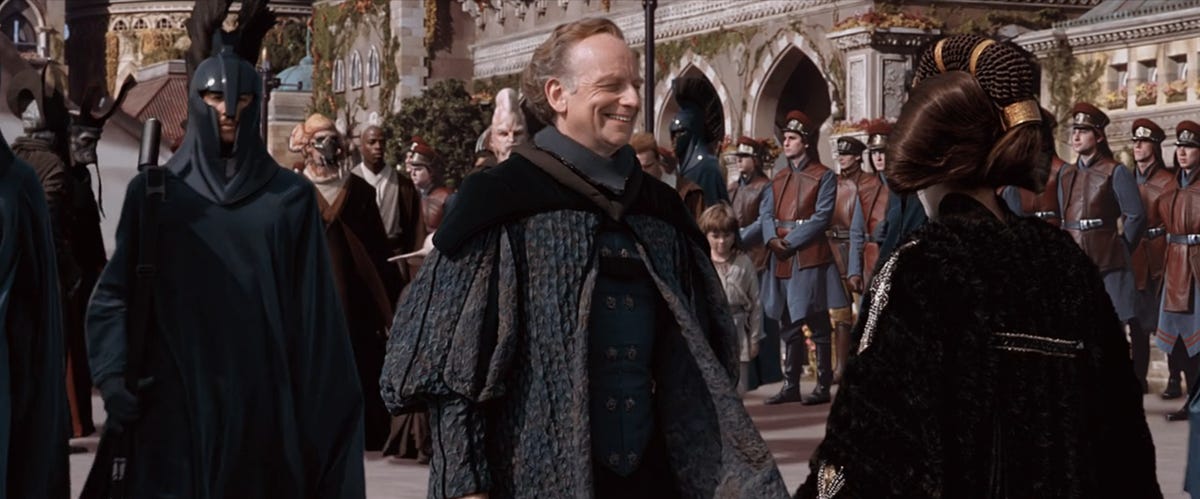
Palpatine works his charm in The Phantom Menace
Lucasfilm
It seems like Dathan shares some of Palpatine’s attributes. “A glib tone and a charming smile,” I read that and thought “sounds a lot like his dad.”
He’s had an unusual childhood on Exegol, but he’s still Palpatine in a way. Not a clone, but a genetic strain cast, because Palpatine was experimenting with trying to find the perfect vessel [for his spirit to inhabit]. But yeah, you think back to Senator Palpatine and the way he manipulates the entire prequel trilogy [where he wipes out the Jedi and declares himself Emperor], which is amazing.
Dathan doesn’t really really know the Emperor but he knows where it comes from. He’s not Force sensitive at all, but he doesn’t know what else Palpatine has planned or engineered for him. So he’s kind of a bit angsty about his own background. But yeah, that line is a reflection of where he comes from — that’s what Palpatine had. A charmer and a manipulator.
Palpatine’s presence in the novel is really fascinating — he’s barely in it, but there’s an eerie sense that he’s always in the background.
The scene where Ochi is given the knife and his eyes turn off … and he hears the voice in the blackness — that’s a big, cinematic moment. If it was a movie, the screen goes black, you get the voice of Palpatine echoing and then the searing red of a lightsaber. That was the first thing that came to my mind, so I wrote it first.
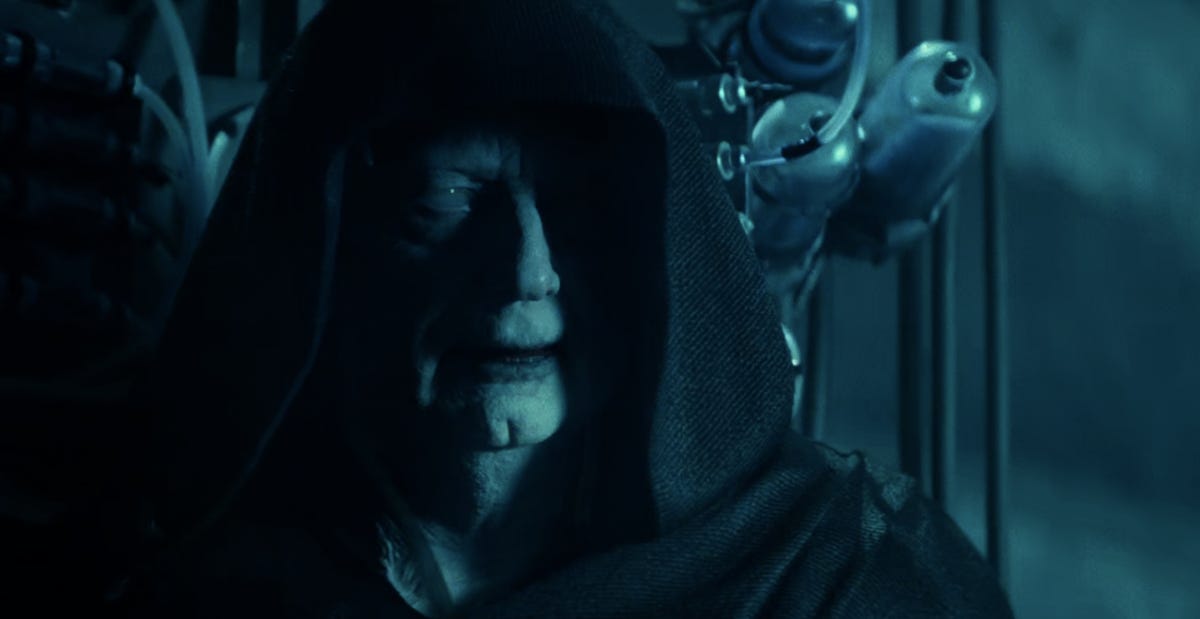
The Emperor, seen in The Rise of Skywalker, operates from the shadows in Christopher’s book.
Lucasfilm
Palpatine is dead, but he’s not dead; things are moving in the background that nobody knows about, his plan to survive beyond the end of the Original Trilogy is underway. And nobody knows. He’s a great character, he’s only in the book for a handful of lines, but that’s enough.
It was fascinating to look back at the flashbacks of Miramir and Dathan in The Rise of Skywalker after reading the novel — I’ve seen that movie multiple times and I don’t think I ever noticed the goons in the background.
Christopher: I watched The Rise of Skwalker frame by frame to really understand it — the flashbacks are really important because it’s the only time we ever see Miramir, Dathan and Ochi; it’s only for a few seconds.
During the outline, I was like, “There’s people behind them in the ship! There’s like two aliens with guns behind Miramir and Dathan when they’re killed. I need to explain that.” I found a way for it all to fit together.
My favorite thing in The Empire Strikes Back as a kid was the bounty hunters, because you see them for 20 seconds. We have no backstory, no dialogue, no names even, until the action figures. Those are the ones I played with, because I could tell their story — we didn’t see it in the movie, so I could create it. The great thing about the sequel trilogy is that it continued that tradition of amazing background characters and details you see for, like, five seconds. Those are the kinds of things that fascinate me.
You got to define Luke Skywalker in his prime. Did you feel pressure with that?
Christopher: I definitely felt the kind of responsibility to do him properly. But also, this is a Luke Skywalker that we haven’t really seen before. In the original trilogy, He goes on his whole emotional journey; becoming a Jedi, coming to terms with his past and his family and the redemption of Anakin.
So, to have him nearly 20 years later was really interesting — what was he going to be like at that point? We see in the end of The Mandalorian season 2, when he comes in to rescue Grogu, he’s a Jedi warrior — doing awesome things with a lightsaber, which was amazing. And then you get to The Book of Boba Fett, where we see him starting to train Grogu — he’s the peaceful Jedi master, serene and calm.
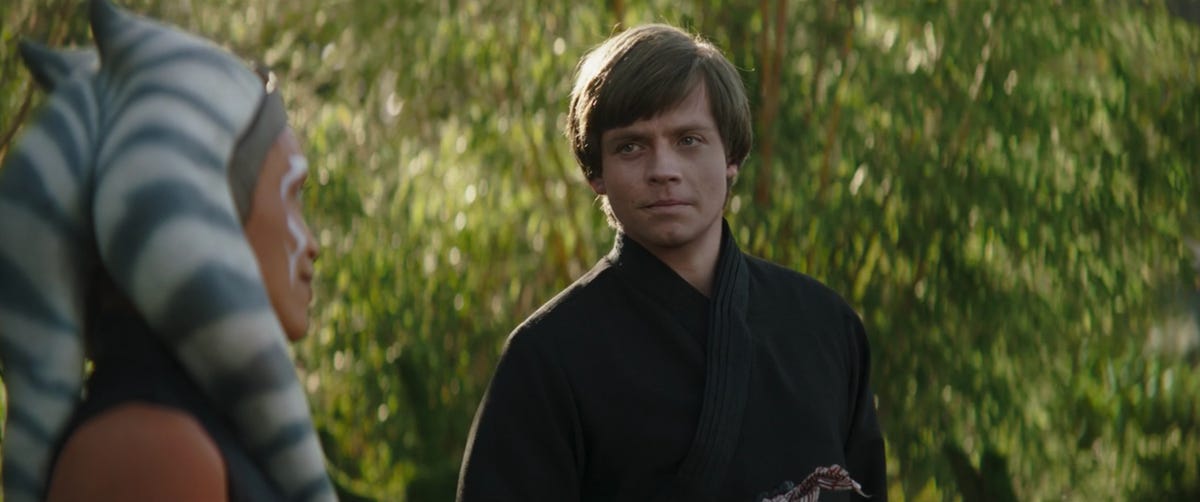
The Book of Boba Fett presented us with a “serene and calm” Luke.
Lucasfilm
There’s two elements to his character at that point, post-Return of the Jedi. He is basically the most powerful person in the galaxy at that point.
The key to his character for me was that he’s aware of the power that he has. Which means that everything he was doing, he was carefully judging and balancing. At every point, he’s thinking what could he do and what should he do? He’s got the ultimate first-hand knowledge of what the Dark Side can do and what the Force can do if it’s misused.
He’s rebuilding the Jedi Order, he’s training his nephew — he’s aware of that responsibility as well because of the family history. He’s a Luke Skywalker we can recognize, but it’s also a new Luke Skywalker, because he’s moved on.
He’s trying to be always aware, but it disconnects him slightly from others. Which is where Lando comes in, bringing back a bit of that human touch. Because Lando is very much on the moment and trying to help Rey’s family while Luke is looking at the bigger picture. They work well to balance each other.
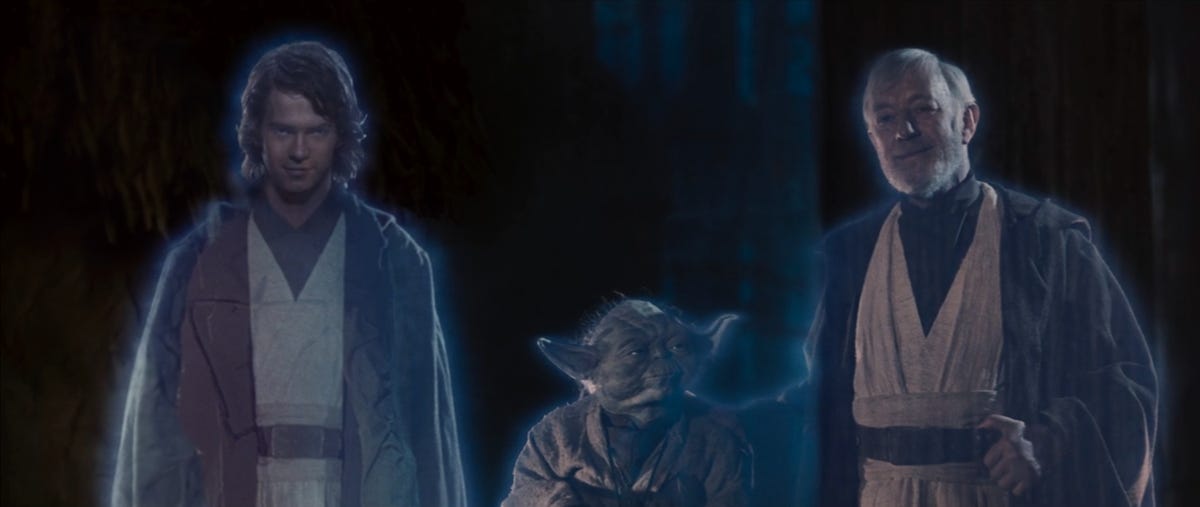
Anakin Skywalker (seen as a Force ghost with Yoda and Obi-Wan Kenobi in Return of the Jedi) makes an appearance in Christopher’s novel.
Lucasfilm
The scene where Anakin speaks to Luke is pretty powerful, another meeting of father and son — is that definitely Anakin? I wondered if it was Palpatine being a rascal.
Definitely Anakin. I was like “What’s possibly the biggest thing I could do?” Have Luke meet his father. Which [Lucasfilm] let me do. They trusted me enough for the story, which is great.
Lando in Shadow of the Sith felt like a version of the character we hadn’t seen before.
Christopher: We know Lando as the playboy, the gambler, the businessman who’s maybe slightly shady sometimes — a man with a plan. So what would happen to a person like that when he goes through the personal tragedy of his daughter being kidnapped? That would turn anybody’s life upside down.
Especially since the book is set six years after she was kidnapped, and he hasn’t found her — all the leads have gone cold and he’s drifting.
When we first meet him in the book, he’s in a cantina — he’s gambling and having a drink. It’s very easy for him to go back to those old habits because that’s the situation where he’s in control.
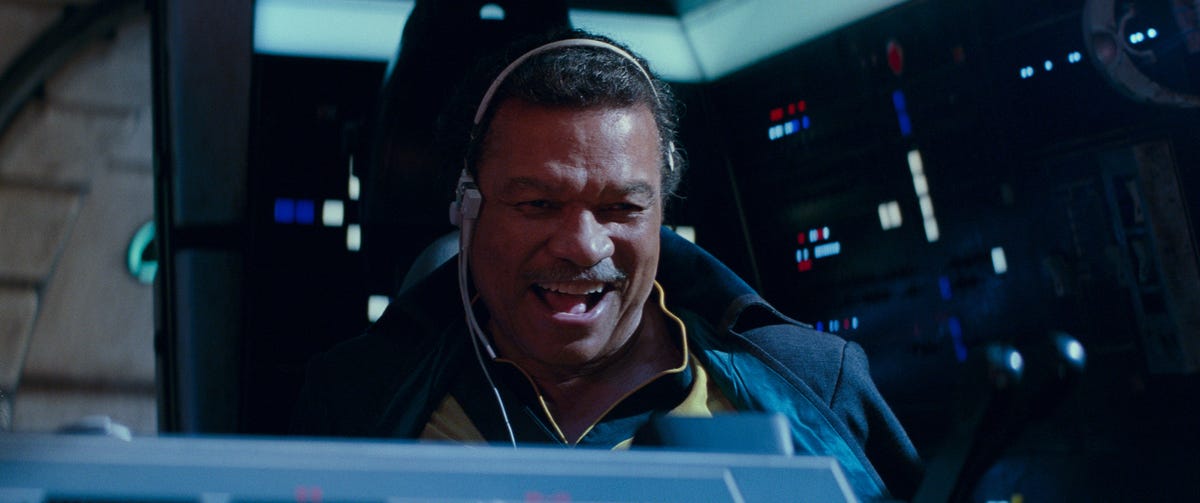
Lando Calrissian, seen in The Rise of Skywalker, gets a new opportunity for an adventure in the novel.
Lucasfilm
In the bigger picture, his life is out of control. So when he overhears Ochi talking about the Sith and this whole plot of kidnapping, that galvanizes him and reignites the fire. He’s been looking for some way of picking himself up and getting back on his quest.
He’s the Lando we know, but there’s something fundamentally different about him. It’s rare for a book to be able to develop one of the main characters to Star Wars in a really meaningful way. With Luke as well, it was a really great opportunity — it’s kind of like creating a new character, but he’s the character that we already know and love.
It became clear also these two have gone on divergent paths. They weren’t best friends, but they’ve been friends for 20 years, and part of the story is them rediscovering the relationship they had. They learn from each other in the book.
They also each blew up a Death Star.
Christopher: Of course they were going to come together — they’re the Death Star destroyers.
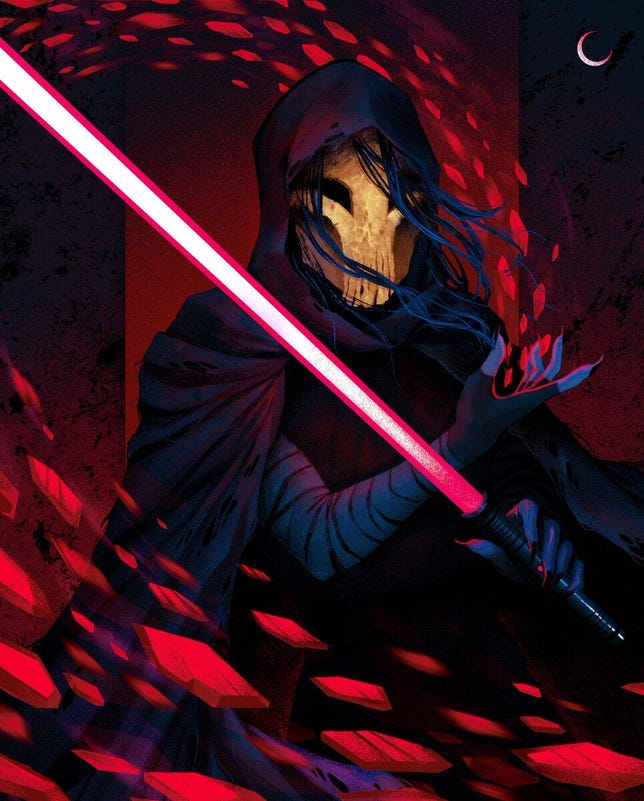
Kiza features in a mini poster that comes with the exclusive Barnes & Noble edition of Shadow of the Sith.
Penguin Random House
My favorite aspect of the novel was the weird arcane Sith stuff, because it was unexpected. How did you develop that?
Christopher: You can use the Sith to bring out the horror aspect in Star Wars. The idea of Sith relics and the kind of power that is echoing from the past, that has survived somehow, it’s very nebulous and mysterious. I wanted to dial up the Sith’s creepy factor and let the reader’s imagination take over.
Kiza is the villain. She has her own personal tragedy. She has her own quest, in her own need for redemption, but she’s trapped.
There are several scenes on Exegol, where Luke has a vision where he’s fighting these wraiths. We also see Dathan, as a younger clone or strand cast, following the cultists as they chant the names of all the Sith Lords — that’s creepy. The Sith allow us to examine that side of Star Wars. We see it in The Rise of Skywalker with the cultists, and I managed to focus it on particular characters in the book.
Those guys chanting the dead Sith Lords’ names was pretty delicious as a fan. Did you define them or did it come through an edit?
Christopher: I was left to my own devices. With that scene, the first draft was probably just two pages — a big list. Like, “What Sith Lords can I mention? Oh, Revan, Noctus and Shaa.” And I made some up. But then the list was ridiculously long, so I cut it back to however many it is in the book.
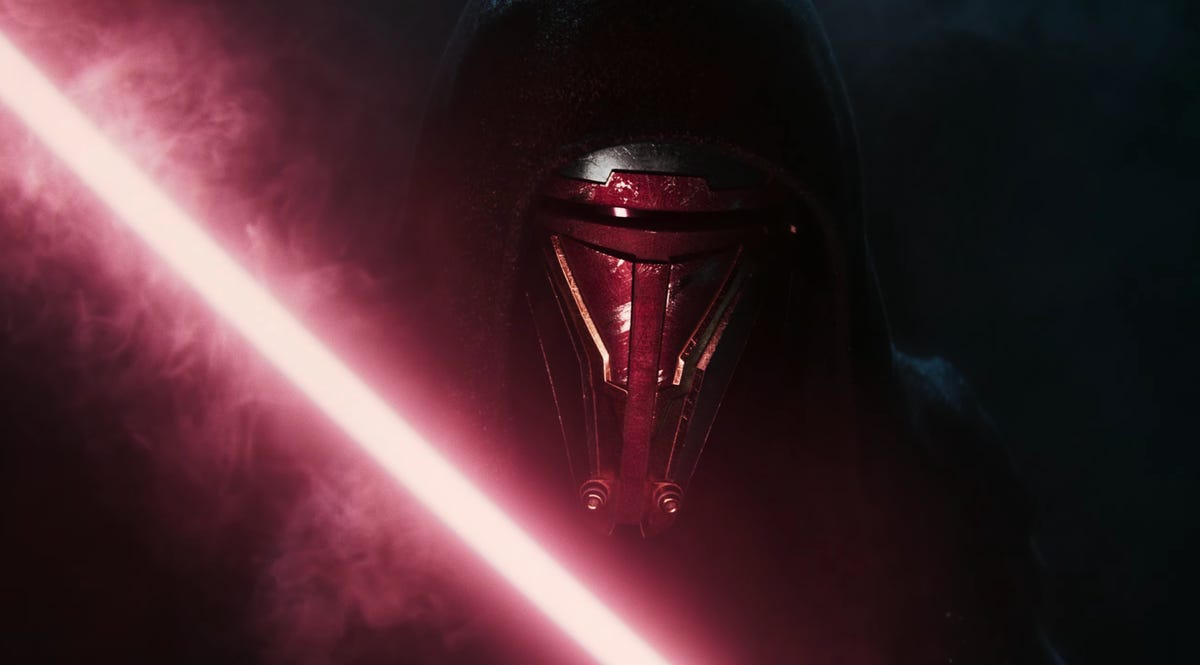
Darth Revan, who played a major role in the Knights of the Old Republic games and will return in the upcoming remake, is among the Sith Lords name-checked in the novel.
Lucasfilm Games
I love that kind of stuff. The best kind of tie-in books, whether it’s Star Wars or Doctor Who or whatever, if there’s stuff that the superfan can recognize and get a buzz out of — amazing. But you don’t need to recognize any of that; it’s just a really cool and creepy scene. And I love the idea of bringing stuff into the canon which perhaps wasn’t canon before. And adding my own stuff.
With those Sith Lords. I mean, there’s a couple I created. And then some brought from other books or stories, and others that are directly connected coincidentally to Kiza.
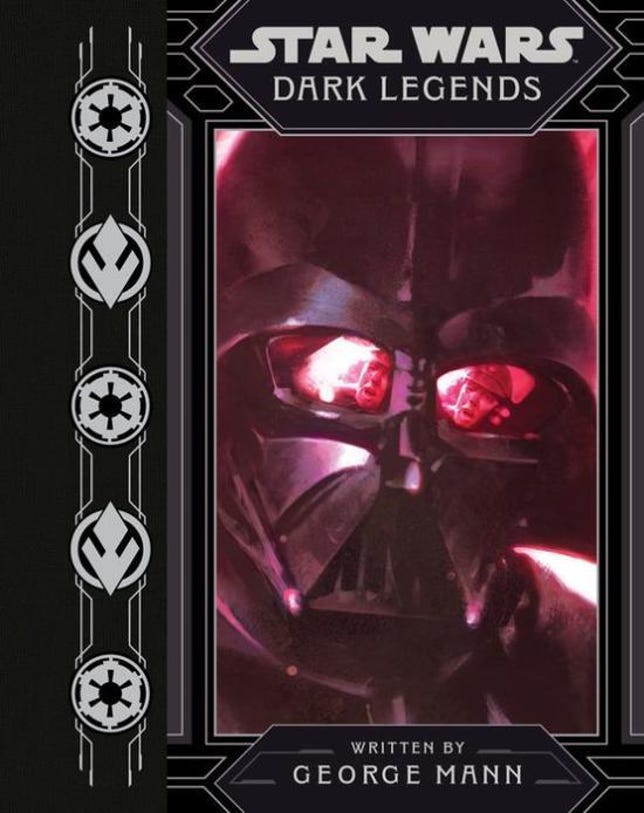
Christopher took inspiration from the stories in Star Wars: Dark Legends.
Disney Lucasfilm Press
Darth Noctyss (which is a really cool name) played a major indirect role in Shadow of the Sith. since Kiza uses the dead Sith Lord’s lightsaber and its curved blade.
Christopher: Noctyss is from Dark Legends by George Mann. It’s part of a series with Myths and Fables and a Christmas one he co-wrote with Cavan Scott. They’re not canon, they’re fairy tales within the Star Wars universe. So I thought like any kind of legend or myth in our own world, there’s often an element of reality. It was a really cool opportunity to fit it all together.
We also had Exim Panshard, an ancient Sith Lord who kinda lives on and controls Kiza through his mask. The flashback to his reign is extremely metal and gothic.
Christopher: It was an opportunity to delve into an area we haven’t seen or heard about. Who knows what era he’s from? The flashback is almost medieval. And we knew Sith relics, and presumably Jedi artifacts, can hold power. And foolish people think that they can control that power, which is obviously a big mistake.
In the Aftermath trilogy [by author Chuck Wendig], it’s established that the mask echoes with the scream of all the souls of those he’s killed. What did he have to do to generate that kind of power? He thought he could live forever, and in order to do that, he needed the power created by the deaths of as many people as he could kill. It’s destruction on an industrial scale. In the flashback, he has machines built to kill the population of the planet he rules. It’s villainy on a scale you don’t often see.
Kiza first appeared in the Aftermath books, where we got a bit of her background and she was given the mask by one of the Emperor’s advisors because he wanted to use her as a puppet. He knew he couldn’t wear it himself, so he gave it to one of the foolish Acolytes of the Beyond that he could control and gain power from.
It seemed like the threat of Panshard escalated to a level we’ve seldom seen since the novels of the Legends era (stories removed from the continuity prior to The Force Awakens’ release) — he became this very heightened villain. Was that something that was in your mind as you wrote?
Christopher: It was just kind of how it came out. And as a fan, my bookshelf is full of Star Wars books, which I love and have read for years and years. So I really was just focused on telling the best story that I could.
Panshard is a different kind of Star Wars villain. It’s scary because the readers don’t really know what he can do. And it gets worse for Kiza leading into the finale, which sees Luke and his allies facing off against this monster from another age.
I found it fascinating that Kiza wasn’t redeemed in the end, despite getting every opportunity.
Christopher: Redemption is a major theme of Star Wars, but she was lost to the mask. She knew it was going to destroy her, but she couldn’t do anything about it, no matter how much she might have wanted it. It was too strong.
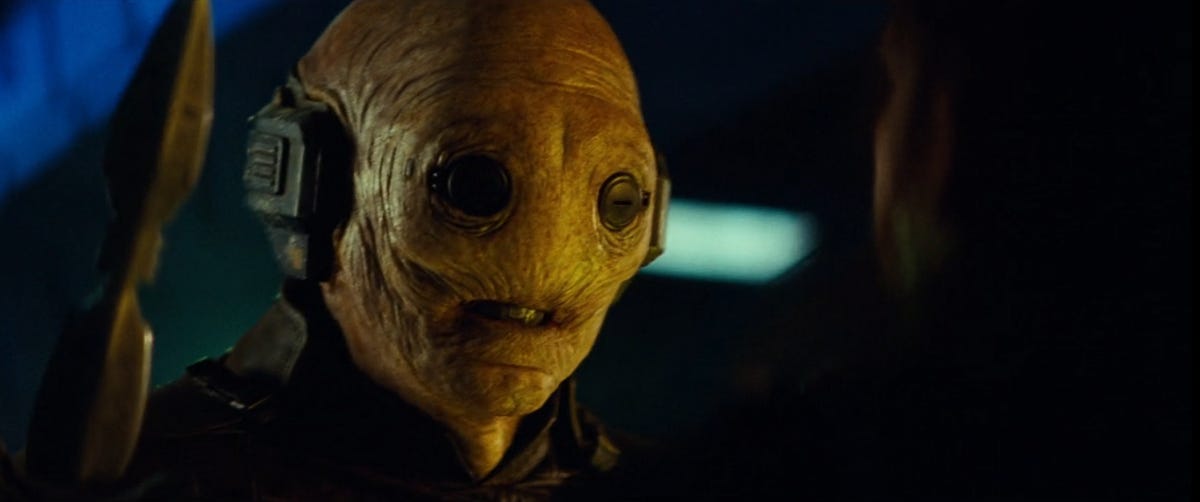
Ochi of Bestoon, seen in flashback in The Rise of Skywalker, becomes increasingly unhinged in Shadow of the Sith.
Lucasfilm
Between Kiza with the mask and Ochi with the dagger, I felt like there was a strong theme of addiction with those Sith artifacts. Was that intentional on your part?
Christopher: Yeah, because that’s the temptation of the Dark Side and the allure of it. Ochi developed an obsession with Exegol. He went there with Vader in the Marvel comics and it was a bad time [Ochi was disfigured]. He wants to get to Exegol again because he thinks it’s a place of rebirth and regeneration.
Addiction was definitely a deliberate theme of the book, since Kiza and Ochi have these obsessions. Kaiser hates the mask, but she can’t not put it on. Ochi is so obsessed with getting to Exegol that he’ll do anything, so the blade is feeding off his emotions — hatred and obsession — creating a feedback loop. It pumps them back into him.
Do you think Exegol would have offered Ochi the answers? Because I reckon that place sucks.
Christopher: Yeah, Exegol was not the answer.
So, do you have a favorite Easter egg that you’d love for people to notice or appreciate in Shadow of the Sith?
Christopher: When Lando orders drinks at the bar [when we first meet him in the novel], the bartender says, “Sip ’em. You’ll live longer.” That’s straight from the 1970s Los Angeles Times newspaper strips.
Once people have read Shadow of the Sith, are there any Legends novels you’d recommend they jump into?
Christopher: The Revenge of the Sith novelization by Matthew Stober, which is the greatest Star Wars book ever written. And one of my favorite Star Wars authors is Michael A. Stackpole, who wrote X-Wing: Rogue Squadron, I, Jedi and quite a number of other books. There’s an Easter egg about him in Shadow of the Sith, but I’ll leave that as a surprise for people who can spot it.
Movies Coming in 2022 From Marvel, Netflix, DC and More
2022’s Best TV Shows You Can’t Miss on Netflix, HBO, Disney Plus and More

